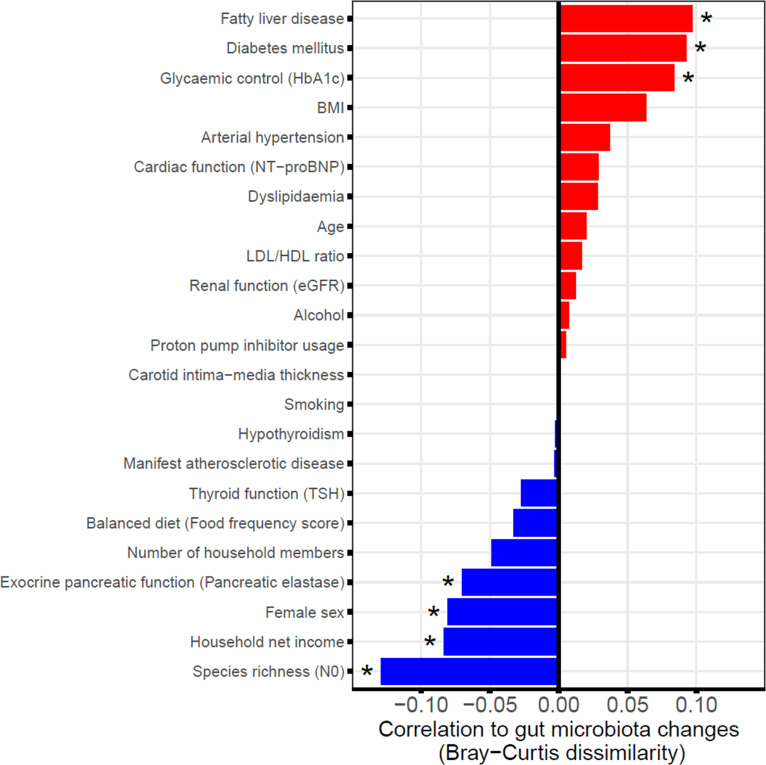Figure 4.
Contribution of phenotypic factors to faecal microbiome changes. Shown are the correlations between different phenotypic factors at SHIP-2 and global changes in the faecal microbiome from SHIP-2 to SHIP-3. Large positive associations indicate greater variation or instability in the faecal microbiome if the respective factor is distinctly elevated (continuous variables) or positive (binary variables). On the other hand, large negative associations suggest stability of the faecal microbiome. *Indicates significant associations (q<0.05). BMI, body mass index; eGFR, estimated glomerular filtration rate; HbA1c, glycated haemoglobin; HDL, high-density lipoprotein; LDL, low-density lipoprotein; NT-proBNP, N-terminal prohormone of brain natriuretic peptide; SHIP, Study of Health in Pomerania; TSH, thyroid-stimulating hormone.

